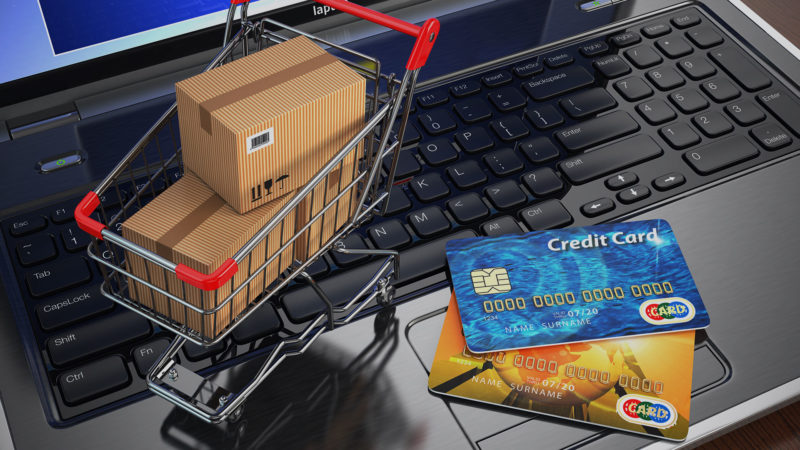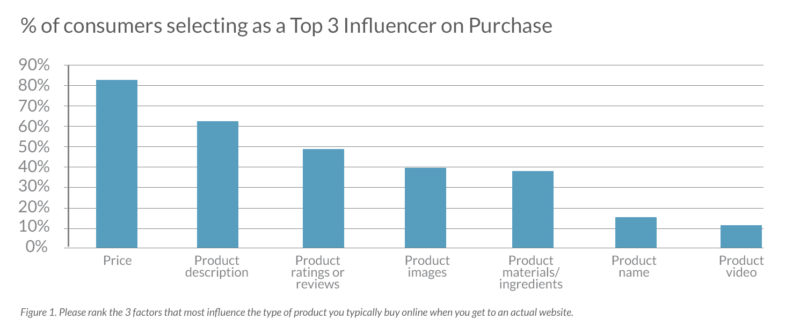The New Shopper Marketing Paradigm, Part 4: Maximizing Online Product Conversion Rate
Columnist Jonathan Opdyke continues his retail series; this time, explaining how brands can increase conversion rates for their products on ecommerce sites.
My last column discussed the primacy of product detail page views as the core metric for digital marketers working at product manufacturers.
One of the things HookLogic (my employer) does is to drive qualified traffic to product detail pages for our brand clients, so it’s something to which we pay close attention.
Our data scientists look at every probability to decide which products to push, in which places, on which sites, and to which users in order to maximize click-through rate and conversion for brands on retail sites. It’s a problem that’s important to address all year, but is especially critical for retailers as the holiday shopping season approaches.
Product Conversion Rate FTW
But our work is just part of the equation. Product conversion rate, or the percentage of users visiting a product page who end up buying, is the other essential ingredient to selling more products online.
Think about GEICO. We see their ads everywhere. They spend more on demand generation to their online insurance application than almost any brand (I’ll take a guess that you know how long it takes to save 15% on your car insurance).
But what if, when we arrived at GEICO’s website, there was very little information about GEICO’s insurance offerings, and the pages were uninviting? Do you think GEICO would be able to spend as much on demand generation? Of course not!
Successful direct response marketing requires a strong conversion rate once a consumer responds. Otherwise the effort and spend are a waste.
Like GEICO, retailers continuously optimize their online stores for conversion rate as a core complement to their demand-generation strategy.
They run sophisticated tests of page layout, checkout processes, imagery, colors, promotions, pricing, personalization algorithms, and dozens of other strategies in the effort to eke fractional conversion rate percentage increases out of their sites.
Brands’ Role In Product Presentation At Retail
Does this mean that conversion is purely the retailer’s job?
Absolutely not! Offline, brands spend an immense amount of money on packaging design and in-store displays trying to make sure their products will appear at eye level and look compelling to shoppers.
In fact, brands play a big role in executing the four P’s of marketing in-store (price, promotion, product and place), sending crews of people into the field to ensure that every aspect of their products’ presentation at retailers is exactly as their marketing departments, shopper-marketing agencies, and consultants determined would sell the most products.
Considering the volume of shoppers now conducting research online, few brands have shifted enough priority to online product presentation, particularly in comparison to their offline efforts. When I browse ecommerce sites, I still find many products with a single small product image, and few or no customer reviews.
Few products offer demonstration videos or engaging photography of the product from different angles, or in use by a consumer. If you’re looking at two competing products, and one presents a bunch of rich information and reviews, while the other has very little detail, which one are you more likely to purchase?

This Target.com product page crams in lots of information to help consumers make a purchase decision.
Our marketing insights team recently ran a shopper study analyzing the factors consumers consider while shopping for a product online.
The research confirmed that online consumers are far more likely to buy products that are well-presented and competitively priced, featuring strong written content, compelling imagery, videos, and positive reviews from a decent sample set of customers.
Spending On Product Presentation Lags Changes In Consumer Shopping Behavior
The need for strong product presentation may seem obvious, but a lot of brands have yet to focus significant budget and energy on this topic.
Of course, the more advanced brand marketers have gotten past the block-and-tackle phase of online product presentation. They have invested in many of the above tactics as well as a professional brand website to ensure that consumers who perform detailed research can learn more.
On the cutting edge, some brands are connecting directly with retail customers at the digital shelf — with question-and-answer tools and real-time chat. Some even marry physical and digital, using mobile tools to reach people in offline retail stores.
As the “First Moment of Truth” in the purchase process moves increasingly online, the possibilities get quite exciting.
No longer is a brand’s story limited to 12 inches of shelf space and six faces of a rectangular box. Digital presents unlimited opportunities to combine elements of mobile, social, photos, video, dynamic and integrated promotions to bring the product experience to life.
And as much as brands would like customers to volunteer to hear their story on Facebook or to find their way to the brand’s website, the simple fact is that most in-market customers are first introduced to products in the retail environment when they start their research. Just compare Walmart and Amazon’s online traffic to that of most product brand websites.
Winning The Battle To Get Placed In The Shopping Cart
To conclude, let’s loop back to the topic I opened with — product conversion rate.
All of the tactics I’ve mentioned can be directly improved by brand investments, and each increases the percentage of shoppers that click the “add to cart” button on a product detail page.
The conversion rate is also amplified by the many halo effects I noted in my last column – if more people decide to buy a product based on the information at one retailer, other people will buy the product in other channels.
Our white paper, “Turning Online Browsers Into Buyers: Where Brands Can Influence Most,” which lays out the research described above, also lists a number of third-party companies that can help with online product presentation and product conversion rate.
My next and final column in this series will explore the future of digital shopper marketing, including other opportunities to raise the bar for sales performance and customer experience.
Opinions expressed in this article are those of the guest author and not necessarily MarTech. Staff authors are listed here.
Related stories

